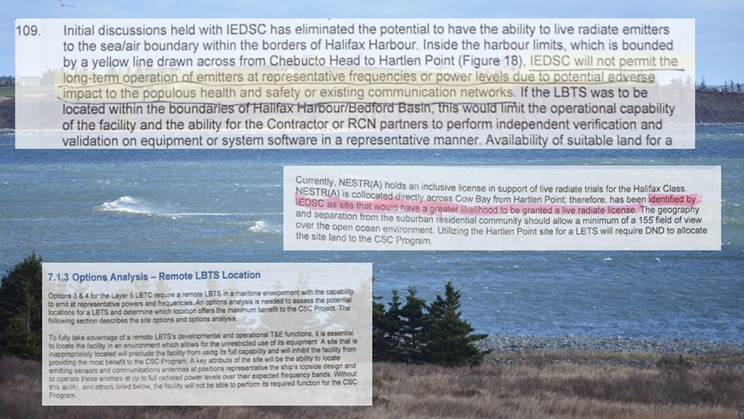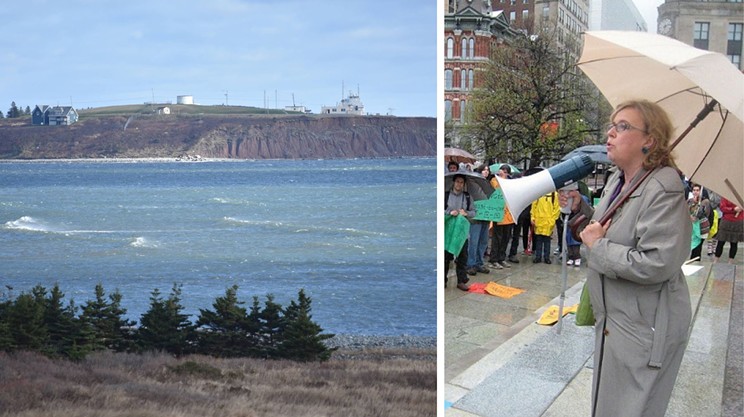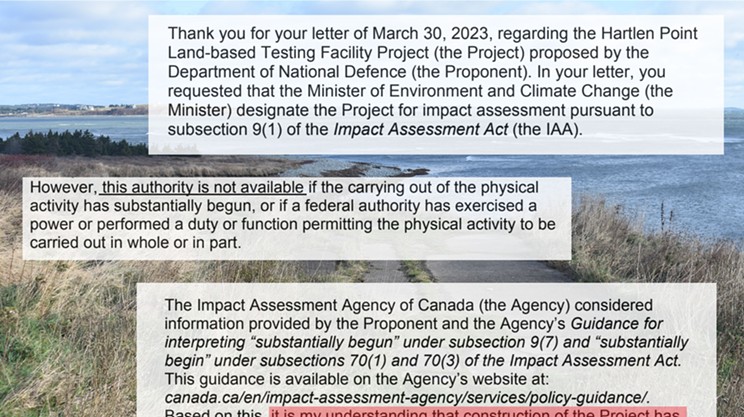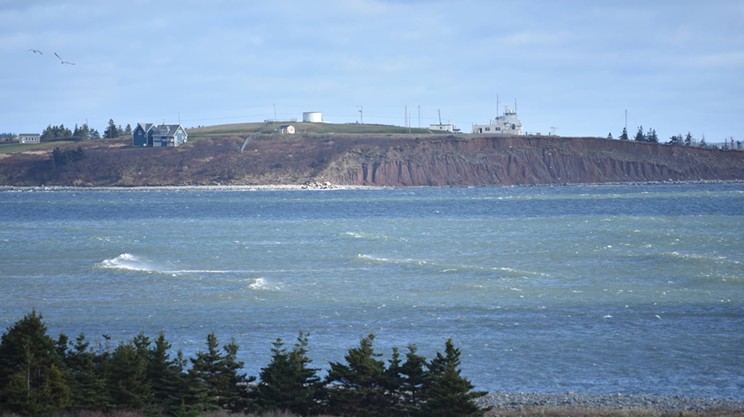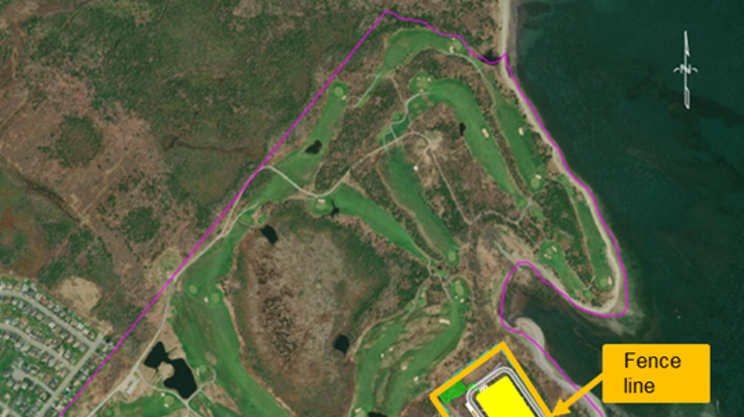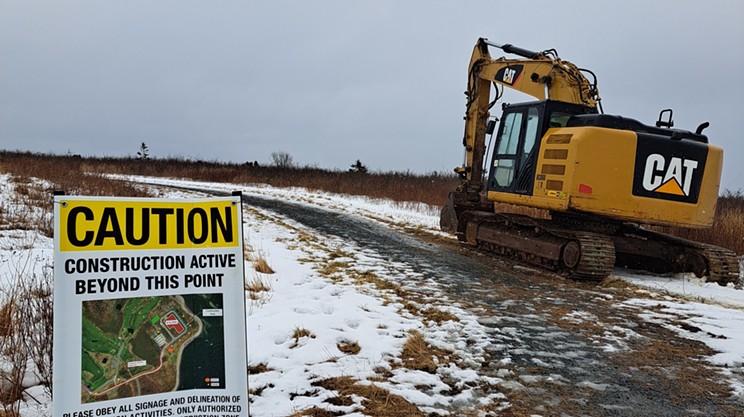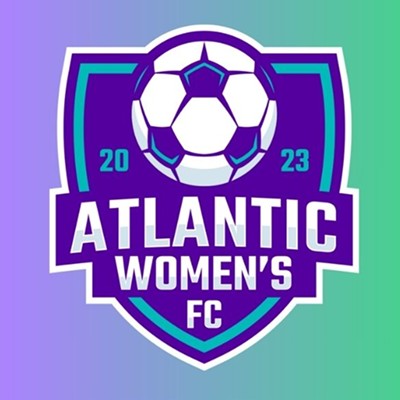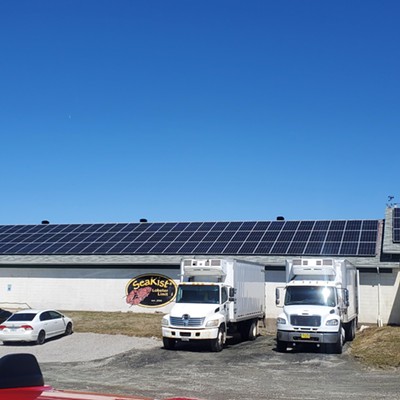The Canadian military’s choice of a future land-based warship testing facility has rankled neighbours, fishers and environmentalists alike. And a third-party site selection review leaves further questions, according to documents The Coast has reviewed.
The 202-page report, prepared by Irving Shipbuilding Inc. for the Department of National Defence, weighs the pros and cons of Hartlen Point against four other potential sites for a planned $65-million naval facility. But the project’s critics, who obtained the private report through a Freedom of Information request, argue it overlooks key concerns—and in some cases, raises more concerns.
What’s happening at Hartlen Point?
Canada’s in the midst of a $56-60 billion effort to overhaul its naval fleet. More than half of the Canadian Navy’s 12 Halifax-class patrol frigates are 30 years old, and its four Iroquois-class destroyers have been retired since 2017. To inject new life into its fleet, the federal government is shelling out for 15 Canadian Surface Combatant ships, billed as Canada’s “major surface component of maritime combat power.”
The DND sees Hartlen Point as “critical” for running the fleet’s combat systems through “rigorous tests and trials.”
The military has plans for a 9,000-square-metre building, big enough to fit 120 full-time staff, including members of the Royal Canadian Navy and DND employees. Construction is set to begin in 2023.
Environmentalists worry the facility and its high-power radio emissions would irreversibly harm Hartlen Point’s ecosystem and the many species that call it home. More than 17,000 people have signed an online petition calling on federal decision makers to move the military testing site and pledge “total cooperation” to maintaining the ecosystem as is. There are also fears the facility’s environmental effects could ripple far beyond the point—from jeopardizing the nearby lobster fishing industry to potentially harming those who live nearby.
Why Hartlen Point was chosen
In an emailed statement to The Coast last month, the DND shared that given “the complexity of the facility and its requirements,” it commissioned a “third-party consultant” to evaluate several proposed locations based on “a number of criteria.” That report—prepared by Irving—has not been made publicly available on the DND’s website. But campaigners from Protect Hartlen Point, a group aiming to have the military consider another site for its facility, obtained 11 pages of the report through a Freedom of Information request and shared them with us.
Irving’s site selection report from Feb. 26, 2021 compares Hartlen Point with four alternatives: The Bedford Basin, CFB Halifax, Ferguson’s Cove and Osborne Head.
Each of those sites was singled out for meeting a few must-haves: They’re close to Halifax’s naval base and contractor shipyards, they’re close to construction services (from cranes to heavy transport), they’re at least 25 acres and they’re accessible by 100-series highways.
But Irving’s report nixes three of those options—Bedford, CFB Halifax and Ferguson’s Cove—fairly quickly. The issue is boundary limits with Halifax’s harbour.
Canada’s body overseeing science and economic development—Innovation, Science and Economic Development Canada, or ISED—“will not permit the long-term operation” of high-powered radio emitters within harbour limits, Irving concludes, “due to potential adverse impact to the populous health and safety.” (That information doesn’t appear on the DND’s website or its impact assessment registry.) That’s a problem for the DND, which wants to test its warships’ combat and communications system—both of which involve those very radio frequencies.
Halifax’s harbour limits expand from Chebucto Head to the southernmost tip of Hartlen Point—but the bulk of Hartlen Point falls just beyond ISED’s radiofrequency exclusion zone. So does Osborne Head, which sits across Cow Bay from Hartlen Point on 34 acres of DND land.
Unlike Hartlen Point, Osborne Head already holds a radio-testing license for the Navy’s Halifax-class frigates. But Irving found drawbacks to the site: Roads from Eastern Passage are “narrow and winding” with “low power lines” that may pose “logistical issues” when shuttling large equipment. Converting Osborne Head’s current military facilities would require “major infrastructure updates,” including asbestos and lead removal. And the 20-odd neighbouring homes off Seahawk Close, Cow Bay Road and Lintaman Lane, the report concluded, were a “disadvantage.”
Report overlooks concerns, critics say
Tony Rusinak, who lives in Eastern Passage near Hartlen Point, wonders why his home and others nearby weren’t deemed as noteworthy in Irving’s report. More than 100 homes off Shore Road, Sandpiper Drive, Sun Key Drive and Sand Key Drive sit a kilometre or less away from Hartlen Point’s northern border, and less than 1,200 metres from the proposed facility.
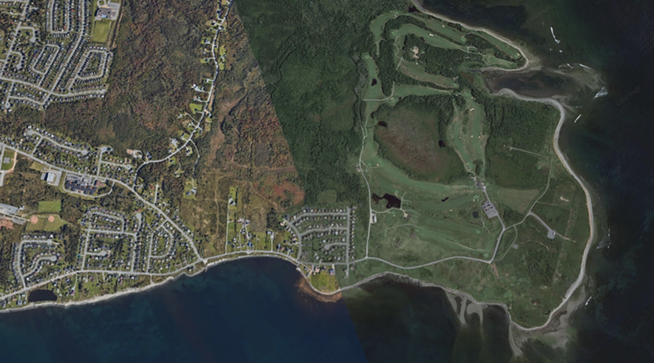
What Rusinak hears instead, he tells The Coast, are “very glossed-over statements” from the DND about the planned Hartlen Point facility and its potential health impacts.
“They are not revealing anything—any details—about how powerful these radiofrequency emissions are and whether or not it will affect the health of those in the immediate area. There is no hard statement,” he says. “That scares me.”
Also absent from Irving’s site selection report? Any mention of wildlife and the proposed areas’ ecosystems. That doesn’t sit well with amateur bird watcher Nikki Gullett, who points out that Hartlen Point is one of the most biodiverse bird habitats in all of Canada—and one of very few without federal or provincial protection.
“This is a critical stop for hundreds of thousands of migratory birds every year,” she tells The Coast. “There are so many grassroots organizations trying to protect so many pieces of land right now, because Nova Scotia just… I don’t think they realize what they have. And once it’s gone, you can't get it back.”
The DND tells The Coast by email that it “will take all necessary steps to ensure the safety of all, including the general public and defence team personnel,” while building and operating a site at Hartlen Point. A military spokesperson adds that an environmental assessment is “currently underway,” and that the DND has asked its environmental consultant “to perform additional studies looking at migratory birds and owls in the area.” Early results from that survey are expected “in the coming months.”
What happens next?
Campaigners calling for the DND to relocate its planned testing facility have been reaching out to attendees at the UN’s Biodiversity Summit currently happening in Montreal (COP15).
The DND, meanwhile, says the “exact precise siting” of a Hartlen Point facility is “yet to be determined,” as it will depend on the outcome of the current environmental impact studies.
A spokesperson adds the DND “wouldn’t speculate” on how the environmental assessments will impact a future warship testing facility’s location, “as those decisions will be made once the results are available.”

